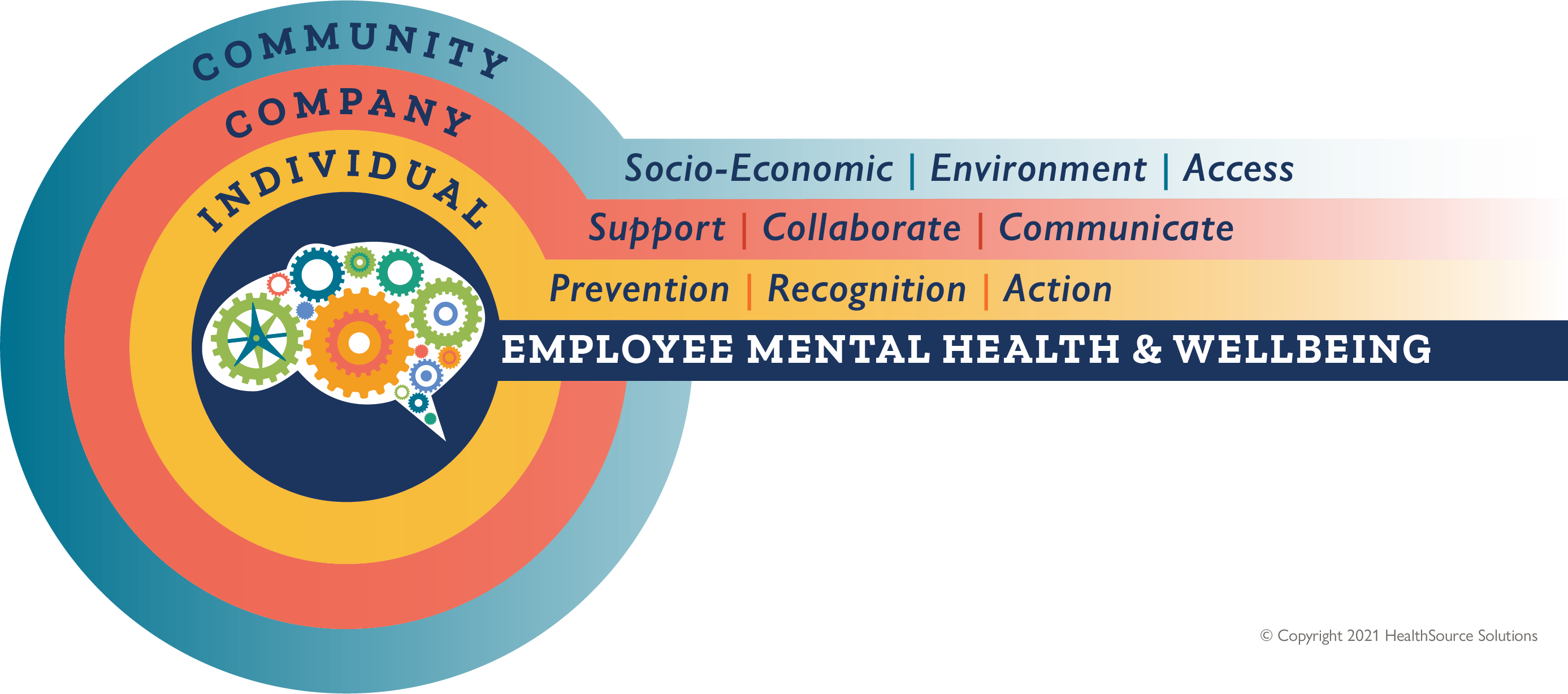Overcoming Challenges of Bringing Wellness to Educators


It’s no surprise that educators struggle with stress, mental wellbeing, and fatigue.
Connecting with teachers, building community relationships, and partnering with administration helps improve this population’s engagement, participation, and positive outcomes. However, this is particularly challenging when considering the time constraints they already face during their workday and a truncated calendar. Both these factors compete with the goal of fostering lasting wellness programming.
At HealthSource Solutions, we’ve developed a model that supports organizations and populations, like education, that applies a multi-faceted approach to dive deeper into the issue of mental health and wellbeing. Our objective is to help broaden the approach and implement interventions for teachers that reach beyond end-point solutions and short-term goals. Once the critical piece of individual support and access to care is implemented, it’s time for the organization to start the deeper work of building a culture of resiliency that meets the needs of the educators, the support staff, and the administration.

A Missouri school district was struggling with declining mental health and wellbeing. The issues were apparent as they reviewed data:
- Patterns of higher sick time usage
- Unsustainable FMLA use
- Consistent feedback from staff about burnout
They needed to take action.
In the first year, with the support of HealthSource Solutions, they laid out a comprehensive three-year strategy based on the model above. They started by building the foundation. A mental wellbeing team was formed, including key district decision-makers, educators and staff. They put resources and time into executing the annual plan and met 90% of their goals by year-end.
Activities included:
Wellness Strategy
- Create a district-wide Mental Wellbeing approach.
- Review PSE (policies/systems/environment) through the lens of mental health and wellbeing.
Leadership Alignment
- Initiate monthly Mental Wellbeing communications for all district leaders to distribute to their staff.
- Develop a district-wide Mental Wellbeing statement to roll out to all employees at the beginning of the school year.
Implementation
- Initiate “Ask. Listen. Refer.” training for all the Wellbeing Advocates (each building has at least one advocate).
- Raise visibility of mental wellbeing through Gratitude boards, Zen Dens, and WellSpace, a virtual relaxation room.
- Launch a resiliency campaign focused on supportive benefits such as EAP, health plan resources, and financial counseling.
- Utilize the district’s wellness portal to build programs specific to mental health and wellbeing.
- Develop a “Resiliency Re-fuel” initiative to ensure staff take adequate time to care for themselves.
What were some outcomes?
- 2X more utilization of EAP services
- 88% improvement in productivity
- 6 fewer workday hours were missed
- Staff feeling connected and supported
And the proudest moment … they were a 2023 Healthiest Employers Winner!

This Missouri school is not unusual. Across the nation, teachers are struggling with increasingly tight budgets and rising metrics of success that demonstrate their ability to meet the needs of their students. As some of the most scrutinized public servants, it is no surprise that they operate in a normal state of stress. Programs like the one HealthSource Solutions implemented help to meet them where they are and offer them the support and help they desperately need.
Building a culture of mental wellbeing takes time and a sustained effort. It’s essential to understand that mental health and wellbeing is a long-term commitment, not a one-and-done.
let us help
Need guidance in developing and executing a comprehensive Mental Wellbeing Strategy?



